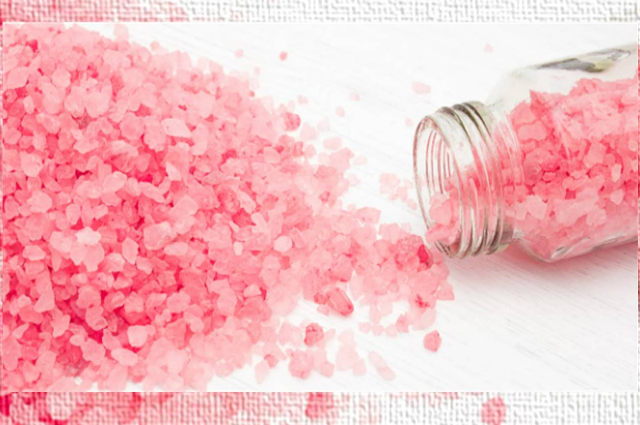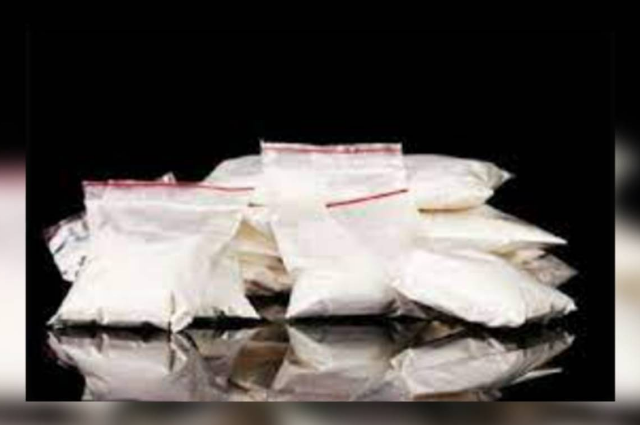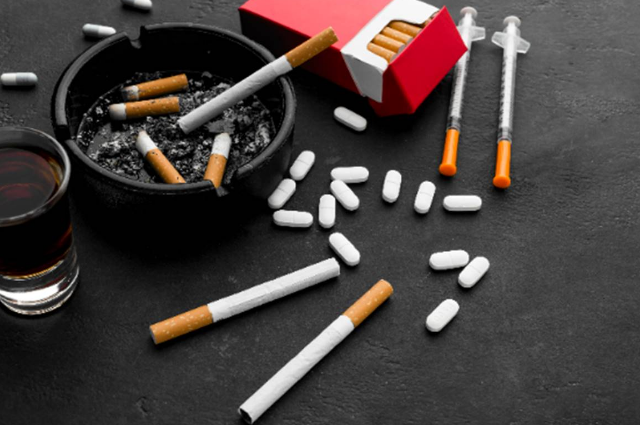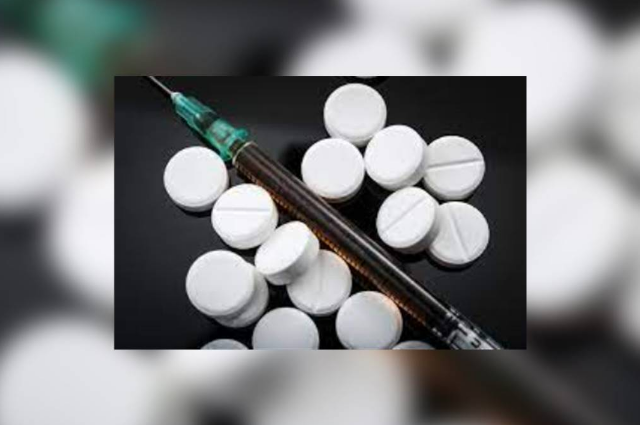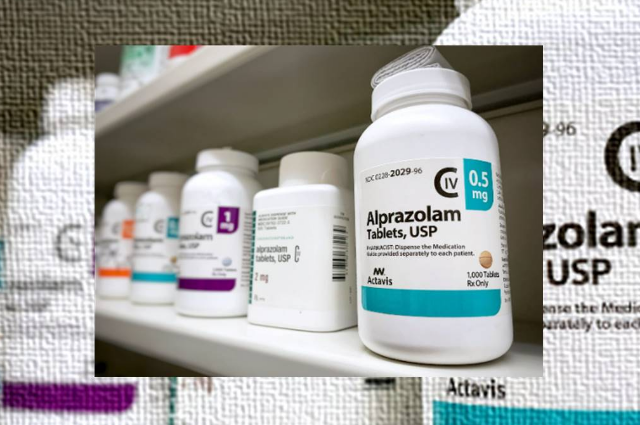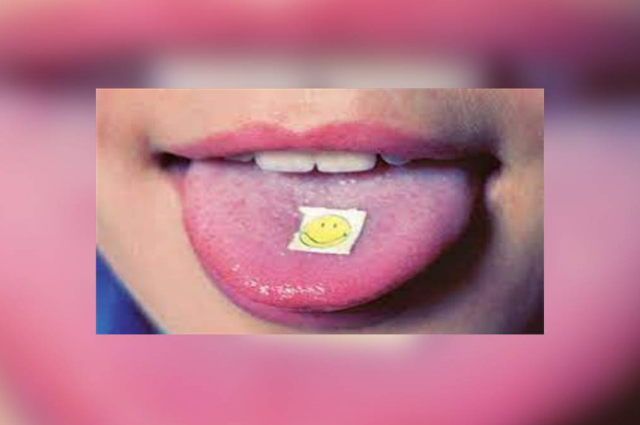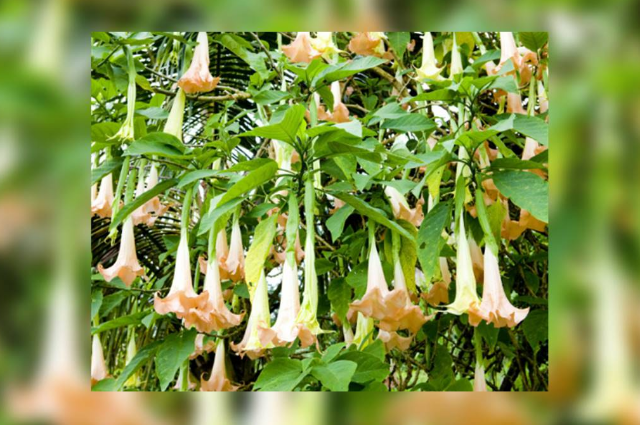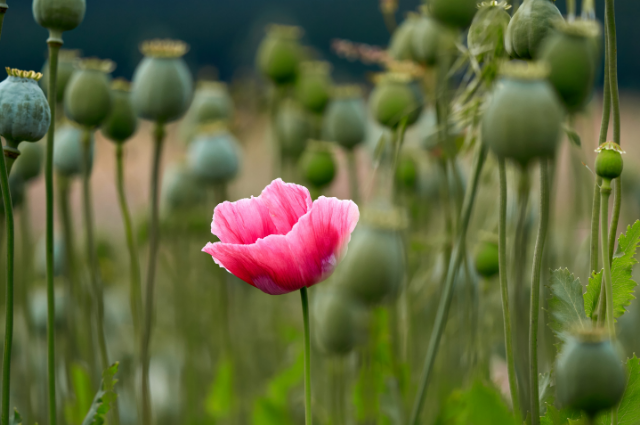
Photo by Ingo Doerrie on Unsplash
The term Public Interest Issue by its name is not difficult to comprehend and we have our ideas as to what kind of problems might fall in its periphery. Down from human rights violations like trafficking, economic exploitation, domestic violence, child abuse or gender-linked discrimination, up to health hazards or environmental pollution, and even cruelty towards animals – a wide variety of problems can be perceived as public interest issues. Before plunging into a particular issue, say a health hazard through drug abuse, it won’t be irrelevant to introspect on the concept of Public Interest.
Concept of Public Interest, Public Interest Law, and Public Interest Issues:
“Public Interest” broadly involves the welfare or well-being of common people or the general public.[1] However, identifying public welfare may not be unanimous and as such the perception of public interest has different approaches and undergone changes from time to time.
John Stuart Mill, in his letter to George Grote during the 19th century, wrote, "human happiness, even one's own, is, in general, more successfully pursued by acting on general rules, than by measuring the result of each activity which is, even more, the case with the general happiness, because any other plan would not only leave everyone uncertain about what to expect but would also involve perpetual quarreling..."[5] This concept is later reflected in "Veil of Ignorance" approach, which was first proposed by John Harsanyi and then popularized by John Rawls in his Theory of Justice in 1971.[4]
As described by Routledge in 2012, economist Lok Sang Ho in his book “Public Policy and the Public Interest”,[2] opines that the public interest must be assessed impartially, and defines the public interest as the "ex-ante welfare of the representative individual.”[3] This "ex-ante" approach assumes an equal chance for everyone to be anyone in the society whose response to a change would represent the impact of that change on the society at large. The limitation of this approach is that it evaluates a change before the event and not after the event without knowing whether one would be benefited or be a sufferer from it.
According to The Institute of Chartered Accountants in England and Wales, a generalized definition of Public Interest may result in unintended consequences. Instead, each circumstance should be assessed based on criteria like relevant people, their expectations, wants, and different constraints. Transparency of the decision-making process and balancing competing interests are crucial in assessing any Public Interest Decision.
The term “Public Interest Law” was widely adopted in the United States during and after the social turmoil of the 1960s, which grew over a tradition exemplified by Justice Louis Brandeis. Brandeis, before becoming a U.S. Supreme Court Judge, incorporated advocacy for the interests of the general public in his legal practice. In his much-celebrated speech of 1905, Brandeis criticized legal professionals who, able lawyers have to a large extent become adjuncts of great corporations neglecting their obligation to exercise their powers for the protection of the people.[6]
In the late 1960s and 1970s, a sizable number of American law school graduates tended to seek ‘relevance’ in their work by addressing controversial social issues. They categorized themselves as Public Interest Lawyers to distinguish themselves from the ‘corporate adjuncts’ as referred to by Brandeis.[7] Public Interest Lawyers’ practice in the USA and consequently in a growing number of other countries expanded to encompass a broader range of social activities directed towards a multitude of objectives like civil rights, women's rights, civil liberties, consumer rights, public health, environmental protection, and so on. A common denominator for all public interest lawyers remains the ethics of ‘fighting for the little guy’, i.e. representing the underrepresented and vulnerable sections of society.[8]
Public Interest Issues can thus be regarded as general misconduct risking human rights, public health, safety, public money, the environment, and everything else that affects the well-being of common people from different communities around the globe.
Drug Abuse – a serious Threat to Public Interest:
The theoretical conceptualization of Public Interest might have undergone some transformation and still may vary from one theoretician to another, but certain social issues can readily be identified as a threat to Public Interest without debate. These issues are often found to coexist and reinforce one another. Drug Abuse is one such public interest issue that apart from affecting the personal health of the user supports a parallel ecosystem of numerous crimes.
The most commonly expressed reason why people resort to substance abuse happens to be seeking relief from the stress of life. Now, whatever be the reason both clinical and field studies have established the fact that men tend to indulge in addiction more than women do. Though due to biological factors including hormonal fluctuations and psychological orientation as well as Social setup women are more susceptible to stress and trauma and as such more prone to Depression, during depression men are found to resort to substance abuse much more than women to escape from unpleasant feelings. The impact of addictive drugs in their turn is likely to make males more aggressive and abusive while the same may help females endure the agony. Perhaps, this is the reason why sex rackets and drug rackets run together strengthening and reinforcing each other.
Leaving aside the gender and criminal implications of drug abuse, if we narrow down our concern over where people land by adopting or developing addiction, we find in conformity with several scientific and psychiatric studies that, most of the drugs used for addiction have a serious adverse impact on the physical and mental health of the users of either sex and may become fetal instantly or gradually.
Most of the researchers have ranked the addictive drugs based mainly on the degree of self-harm. The ranking of the drugs may differ slightly from one researcher to another, but their corresponding effects remain unaltered. While preparing my list of the Deadliest Drugs in the World and their Impact on user’s Health and Life, I noticed that though drugs are thought to be meant for user’s recreation, some are specifically used to intoxicate others for evil purposes. So the list eventually depicts Deadliest Drugs in the World and their scary Implications on Personal Health, Social Life, and Public Interest in general. Accordingly, eleven drugs are placed under two broad categories.
Self-Intoxicating
1. Krokodil:
Krokodil ranks top of the list made by most of the researchers. The drug is named after crocodiles because of the scaly appearance taken by the gangrenous skin. Krokodil originated and spread among the poorest communities in Russia, where it was used as a cheaper alternative to Heroin. Though its addictive impact is almost the same as Heroin, its cost is one-tenth of Heroin. But the savings in price is heavily paid back by developing horrific and almost irreversible side effects. It is prepared by crushing widely available codeine tablets and adding to them non-edible substances like red phosphorous, hydrochloric acid, and even petrol. The preparation itself indicates how dangerous it can be to intake. It is any time more dangerous than any other drug around the world.
After the first intake of the drug, the life expectancy becomes hardly little more than two years. The worse impact of this drug is that it rots the body from the inside which gradually leads the skin and subsequently the flesh to crack to expose the muscles and even the bones. Injecting the drug anywhere in the body causes blood vessels to burst and surrounding tissue to die which sometimes leads the fleshes and bones to fall in chunks. The awful side effect has earned Krokodil its other nickname, the Zombie drug.
This flesh-eating drug has killed several thousand in Russia, is gaining markets in several US states and it’s probably a matter of time before it’s going to hit South Africa. In South Africa with its huge population of low-income heroin addicts, the rise of Krokodil consumption is almost inevitable. Once the flesh and bone rotting starts, the symptoms have no remedy. The unbearable lifestyle struck by poverty is probably the main culprit behind this diabolic addiction which cannot be eradicated by mere awareness building.
2. Bath Salt:
It is a synthetic drug prepared in the laboratory and thus it is referred to red to as a ‘designer drug’. Bath Salt is commonly known in street corners as ‘bath powder’. It’s also known as ‘herbal insane’ as well as “plant food” though it has nothing to do with plants or herbs. Surprisingly the name is used for a variety of chemical combinations too.
If consumed as an addictive drug it not only reduces the life expectancy of the user significantly, but also causes serious psychological disorders including suicidal and homicidal tendency. Though the drug causes paranoid delusions and/or hallucinations, experts are of opinion that bath salt is primarily psychoactive rather than hallucinating like acids. However, the ultimate result is more or less similar i.e. delusional beliefs leading to violent expression. It came in the headline for causing dreadful violence and even cannibalism in Florida. If a user manages to survive despite his reckless behavior, he is likely to suffer from hyper mania, paranoid delusion and/or hallucination, dehydration due to overheating, heart attack, and organ failures.
Though both the genders may be exposed to it, symptoms in men manifest more malevolently than in women adding to the predator-prey type incidents.
3. Cocaine:
This widely traded drug is known as a slow killer around the world. Cocaine looks like white powder which is prepared from dried leaves of the coca plant, found abandoned on in South America. It affect several of neurotransmitters and is very dangerous the o nervous system and brain functioning. It is banned in most countries.
Crack Cocaine, the free base form of cocaine is even more addictive, intense and quick and more life threatening too. Crack is prepared by cooking cocaine powder with baking soda mixed together, and then breaking the mass into small pieces, called rocks, which look somewhat like white or tan pellets resembling dry cat food to some extent. It got its name from its crackling when heated and smoked.
Cocaine is not taken orally, rather inhaled or snorted through the nose or alternately injected into a vein. Crack Cocaine is smoked through a pipe. Addicts dotingly call this duo i.e. Cocaine and its derivative Crack Cocaine as coke, snow, snow white, blow, powder, rock, toot, base, nose candy, and flake or smack if not missing few more names!
Cocaine is primarily a stimulant which produces a fast and intense feeling of power and enhanced energy. Then it wears off, cracks being more rapid in wearing off and the user lands in feeling depressed and nervous from an enhanced energetic mood and tends to crave more of the powder to feel good again. Cocaine is so addictive that one may get hooked even after trying it just once.
The effect of snorting cocaine or crack cocaine can be very dangerous. It can damage the septum layer between the nostrils, and thereby cause a hole in the middle of the nose. Cocaine increases rate of heart beat, blood pressure as well as body temperature. Coke cause the heart to beat abnormally and lead a heart attack, stroke, or even death even if it’s consumed just once.
4. Heroin and Opiates:
Opiates, sometimes known as narcotics, are drugs that act as depressants on the central nervous system (CNS) and thus have strong sedative effect. Opiates come from the name opium, which can be produced naturally from poppy plants. World’s largest producer of opium is Afghanistan while India though being more potent to produce poppy plants imposes restriction on cultivating the plants. Opioids are synthetic and chemically prepared opiate like drugs.
The psychoactive compounds found in the opium plant are morphine, codeine, and thebaine. Different forms of opiates have various street names that include Codeine, China White, Darvocet, Demerol, dilaudid, heroin, methadone, Morphine, Percocet, Percodan, Talwin, smack, skag, junk, and Vicodin. According to the United States Library of Medicine, many prescription drugs are characterized as opiates or narcotics. Some legally prescribed opiates include codeine, methadone, morphine and Oxycontin. Morphine which is legally prescribed to alleviate chronic pain is also an opiate and often used for addiction. Thus, in the USA it is administered strictly in hospital settings.
One of the most common illegal opiates is Heroin which is a more concentrated form of morphine. Heroin is responsible for numerous deaths every year in the world. The body tolerance to Heroin develops very quickly which cause the body demanding more intake as the days pass. The deadly side effects are shortness of breathing or quick breathing, body seizures, strange or quire behavior, disorientation, knock outs cycles in brain and even stopping overall brain functioning causing sudden death. According to ‘The Partnership for a Drug-Free America’ report heroin is so addictive that withdrawal symptoms may appear even after many hours of non-consumption.
5. Crystal Meth or Methamphetamine:
The drug is an odorless, colorless form of d-methamphetamine which is a wonderful synthetic psycho-stimulant and this invention of psycho pharmacology was initially used for psychological treatment such as depression. It also acts as an appetite suppressant. But in 95% cases, people are found to develop addiction to it on using it over a time and the effect becomes dangerous if it is frequently used for recreation. It’s now mostly illegally manufactured as recreational drug.
Nicknamed as meth, ice or glass due to its shiny crystalline rocks or glass like appearance the drug is abused specially in parties for its long lasting euphoric effect. It increases dopamine production in the brain that enhances mood and has effects similar to but longer than cocaine.
It is highly addictive, and its long-term use can lead to verbal problems and impaired motor skills. Effects varying person to person include dizziness, circulatory failure, organ failure, visual impairment, heart attack, Attention Deficit Hyperactivity Disorder (ADHD), restlessness and so on. In most case survival after developing addiction is found to be 5 to 7 years.
6. Street Methadone:
Methadone is made by means of chemical synthesis and acts on opioid receptors. This synthetic opioid agonist is used for releasing chronic pain and also opioid dependence such as addiction to heroin or other opioids. Methadone as medicine is prescribed for daily use to relieve cravings and remove withdrawal symptoms. Methadone was developed in Germany between 1937 to 1939 by Gustav Ehrhart and Max Bockmühl and was approved for use as an analgesic in the United States in 1947. Since 1960s the drug has also been used in treating addiction especially in opiates. It is also in the list of Essential medicines as recommended by World Health Organization (WHO).
However, this anti-addiction drug can itself become addictive in prolonged or unauthorized use. Side effects of methadone are similar to those of other opioids, that is, dizziness, drowsiness, nausea and sweating. It has serious implications on the neurotransmitters released in the human brain and serious risks on over dose or prolong use include not only psychological disorders like other addictive drugs, but also some physical diseases like abnormal heart rhythms, hepatitis, pneumonia, HIV, tuberculosis respiratory depression and allied trouble that can even lead to death. Any amount of methadone can possibly kill a child.
The problem of abuse aggravates when methadone is sold in street without prescription and becomes particularly dangerous when gets adulterated. Methadone bottles sold in street may be labeled with a pharmacy label to look authentic but may often be ‘cut’ with other drugs like fentanyl. The addiction capitalized by adulteration would leave one nowhere except disaster.
7. Benzodiazepines:
Benzodiazepines are the most commonly prescribed medication to treat depression and insomnia because of its nerve relaxing effect. Familiar molecules include Valium, Alprazolam and Xanax. These are not psychoactive rather sedatives known as tranquilizers that cools down restlessness, anxiety, insomnia, alcohol withdrawal symptoms, seizures, muscle spasm and pain or discomfort before or after surgical procedure. But at the same time excess or prolonged use of Benzodiazepines may be addictive and consequently adverse. Drug abuse occurs when people obtain these drugs without prescriptions or misuse a valid prescription for addictive purpose to enjoy their sedating effects.
It affects the nervous system seriously causing many side effects like slurred speech, drowsiness, lack of self-reliance, dependency and even acute depression. The antidepressant is felt very nerve relaxing initially, but on prolonged use its effect often gets reversed and leads to severe depression inducing suicidal thoughts.
8. Lysergic acid diethylamide (LSD):
Though LSD is not physiologically addictive, frequent use of LSD can lead to psychological addiction. Common Psychiatric reactions of LSD are anxiety, paranoia, and delusions. Typical effects include altered thoughts, feelings and awareness about one's surroundings leading to unpredictable behavior. Many users experience visual or auditory hallucinations. Dilated pupils; increased body temperature, heart rate and blood pressure; sleeplessness; and loss of appetite are typical symptoms of its consumption.
Side effects of LSD are thought to occur due to alterations in the serotonin system of the body. Effects typically commence within half an hour and may last for up to 20 hours. Even after no farther use distressing flashbacks might occur, a condition called Hallucinogen Persisting Perception Disorder. It is used mainly as a recreational drug, but also for spiritual reasons. Death as a result of LSD overdose is not really known; however, in extremely rare occasions death may be caused due to accidents met out of reckless behavior.
Majority of the above mentioned drugs except Krokodil, Bath Salt and Cocaine are basically developed as stress reducing, pain reliving, nerve relaxing and in a sense life-saving medications, but have potential to become addictive and their over or prolonged use eventually exhibit undesired effects like serious mental and physical impairment including death. Cannabis including Marijuana, Ecstasy, Amphetamines – known as greenies among baseball players, Barbiturates – popularly slang-named as yellow jackets, reds, blues, Amy's and rainbows, Alkyl nitrates, Anabolic Steroids, Methylphenidate and Khat also fall in this category. They are mainly self-harming though can also be used to intoxicate others. But there is a range of naturally occurring or synthetic chemicals which though have moderate to excellent medicinal value are categorically known for their use to assault and perpetrate on others. Those are even more significant so long as Public Interest Issues are concerned.
Intoxicating Others
9. Devils Breath or Scopolamine:
Devil's Breath is derived from the flower of “borrachero” shrub, common in the South American country of Colombia. The seeds when crushed and extracted via a chemical process yield a substance called “burandanga”. The pharmacological name is Scopolamine which is a powder produced from a “borrachero” shrub. Scopolamine is also present in Jimsonweed (Datura stramonium), found in Indian subcontinent and also in continental U.S.
Scopolamine powder if inhaled even for a while, damages memory and wipe out free will and that’s the probable reason that Scopolamine is attributed with the name ‘Devils Breath’.
Borrachero, probably due to its hypnotic effect has been used for hundreds of years by native South Americans in spiritual rituals. It is still regularly traded in the street sides of Colombia but mostly with evil purpose. It is tasteless and odorless, but if blown on the face of a pedestrian, the person is immediately affected and becomes helpless losing own will and carries out whatever order is given to him or her. Thus it is often used for criminal activities like robbery, rape, sex slavery, trafficking etc. It’s widely used as Date Rape Drug by adult and also by young adult male. Unlike most of the drugs it’s not consumed for recreational purpose by the addicts, rather used as a means of to prey on innocent people by the miscreants.
The compound also leads to hallucinations and imagery of frightening images. Moreover amnesia often coexists leaving the victim powerless to recall the events or identify the perpetrators. According to a 1995 Wall Street Journal article, about half of all emergency rooms in Bogota, Colombia were occupied by victims of burundanga poisoning. Jimsonweed in India was often used to induce delirium in helpless unwilling girls while forcing them to commit ‘Sati’, the so called ‘self-immolation’ in the pyre with a corpse. A devil’s practice indeed!
Apart from being ‘Devils Breath’ i.e. used for intoxication to prey on helpless victims, scopolamine (Transderm Scop) in control dose has a medicinal use too and is often prescribed to give relief from seasickness. But the evil usage supersedes the medical use and thereby earns the nickname for the drug.
10. Ketamine:

Ketamine is a dissociative drug which blocks sensory perception and thus is injected as anesthetic for human and veterinary uses. Esketamine, the S-enantiomer of racemic ketamine, was approved in 2019 in USA for dealing with treatment-resistant depression and depression involving acute suicidal thought or behavior. Ketamine is available in a clear liquid for intravenous injection or in form of off-white powder to be used as a nasal spray.
Ketamine can provide pain relief and short-term memory loss. During surgical procedure it is used to provide general anesthesia as a sedation inducing and maintaining agent. It’s very effective in controlling pain due to burn, battlefield injuries and in children who are allergic to or adversely affected by other anesthetics. It’s often preferred as an aesthetic for patients prone to bronchospasm and respiratory depression. Ketamine has rapid action in managing symptoms of depression including acute suicidal ideation. However, on prolonged use the consumer may develop paranoia i.e. become skeptic and develop mistrust on others. It also adversely affects blood pressure.
This wonderful medicine too due to its pain reliving, relaxing and sedative property is often used for recreational purpose and also referred as Special K. However, Dissociative drugs including Ketamine can cause in user visual and auditory hallucinations such as distortion of sounds, sights and colors as well as lead to lose consciousness about self and the surroundings. This is why an overdose of ketamine is widely used in Date Rape i.e. for sexual exploitation or abuse in name of dating after making the victim unconscious or unable to resist.
11. Gamma hydroxybutyric acid (GHB):
Gamma hydroxybutyric acid (GHB) has been a very popular as a dietary supplement and recreational drug. GHB or Gamma Hydroxybutyrate (C4H8O3) is a central nervous system (CNS) depressant which was approved by the Food and Drug Administration (FDA) in 2002 for the treatment of Narcolepsy, a sleep disorder reflected in excessive sleepiness and recurring daytime sleep.
GHB has an addictive potential on repeated consumption. GHB involves withdrawal syndrome similar to that of sedative or hypnotic and ethanol which include anxiety, insomnia, tremors, sweating, increased heart beat and blood pressure, or psychotic thoughts. Euphoria and tranquility at the same time and increased sex drive are the desired effects for which GHB is abused for recreation. It’s used by teens and young adults at bars, parties, clubs and ‘raves’ i.e. all night dance parties. Common negative effects are sweating, nausea, amnesia, headaches, exhaustion, sluggishness in one hand and confusion, clumsiness, hallucinations, amnesia and loss of consciousness leading to even coma on the other.
Interestingly GHB is a naturally-occurring metabolite of the inhibitory neurotransmitter found in human brain. However, naturally-occurring metabolite GHB remains in much lower concentrations in brain than the levels found when GHB as drug is abused. Natural GHB may be found in insignificant amount in some beers and wines too.
Overdose of GHB leads to alteration of mental status and variable extent of respiratory depression. In case of severe GHB intoxication respiratory arrest and death have also been reported. However, proper and timely management can recover the patient within just six hours.
The real abuse comes when it’s used for committing crime on other rather than consuming for one’s own addiction. GHB due its abuse gets stigmatized as a ‘club drug’ or ‘date rape drug’. GHB is available as an odorless, colorless liquid that may be placed in alcoholic beverages and given to unsuspecting victims prior to sexual assaults. It may have a soapy or salty taste. Victims, due to the sedative effects of GHB, become incapacitated and unable to resist the assault. The drug may also induce amnesia in its victim who becomes unable to recall and reproduce the incident.
The Paradox
According to a study published in 2014 in The Lancet, alcohol and tobacco, though not illegal, rank among the ten most dangerous substances consumed by humans. Both alcohol and tobacco have been assessed to be more detrimental than illegal drugs like marijuana or ecstasy.
In a study while ranking the harmfulness the following three factors were evaluated for each drug:
• Physical harm to the user
• Addictive potential of the drug
• The drug's overall impact on society
Psychiatrists specialized in treating addictive behavior, and legal practitioners and police officials with scientific or medical expertise were asked to assign a score to each of these three factors for each drug that was evaluated in the study. 20 different drugs were evaluated, including completely illegal drugs.
According to that study the ten most dangerous substances, ranked from most to least dangerous, were enlisted as:
1. Heroin
2. Cocaine
3. Barbiturates – popular slang names include yellow jackets, reds, blues, Amy's, and rainbows.
4. Street Methadone
5. Alcohol
6. Ketamine – a powerful hallucinogen often referred to as Special K.
7. Benzodiazepines – a family of widely used sedative drugs.
8. Amphetamines – known as greenies among baseball players.
9. Tobacco
10. Buprenorphine – also called bupe or subbies.
Other remaining drugs that were assessed in this study ranked as follows:
1. Cannabis including marijuana.
2. Solvents – volatile substances that can be inhaled, such as glue, nail polish remover, paints, hair spray and lighter fuel (gas).
3. 4-MTA – a derivative of amphetamine and has similar effects to ecstasy.
4. LSD
5. Methylphenidate – central nervous system stimulant, commonly sold as Ritalin.
6. Anabolic steroids
7. GHB – short for Gamma hydroxybutyrate, a powerful central nervous system depressant, most commonly known as the Date Rape Drug.
8. Ecstasy
9. Alkyl nitrates – group of drugs commonly referred to as poppers.
10. Khat – an amphetamine-like stimulant.
Also another study in USA and Britain estimated that tobacco causes 40% of all hospital illnesses especially cancer, while alcohol account for more than 50% of all visits to hospital emergency rooms. In light of these statistics, the authors of this study questioned why current drug policies for Britain and the United States set alcohol and tobacco free for legal use while imposing ban on less harmful drugs like ecstasy and LSD.
However, in both the surveys respondents gave weightage to the self-harming impacts of the addictive substances and not on their abuse in intoxicating others for criminal activities, rape and sexual assaults being most common. In fact, alcohol has been found to be a major vector of and domestic violence and many criminal activities including fatal violence and rapes. On the other hand smoking tobacco is injurious to non-smokers too and pollutant to environment. Both alcohol and tobacco can give avenues to other illegal drugs, such as date rape drugs can be camouflaged well in alcoholic beverages while a cigar can well accommodate cocaine or crack cocaine too.
In the bottom line the researchers concluded that, alcohol and tobacco are two of the most dangerous substances which are exposed for our consumption on a regular basis and as such, in terms of overall potential to cause harm, these two widely used regular addictive are no less dangerous than other illegal recreational drugs like cocaine and heroin.
So long as ‘drug abuse’ is the term alcohol and tobacco escape the legal prohibition, but if ‘Public Interest Issue’ is the concern these two might get a prioritized attention. Nevertheless had drugs like Krakodil, Bath Salt, Devil’s Breath, GHB or Ketamine are made free for regular use like alcohol and tobacco, plight of both public health and human rights would have been even more diabolical.
References:
1. "Public interest", Random House Dictionary.
2. Routledge, 2012 (first published in 2011).
3. "Public Policy and the Public Interest: 1st Edition (Hardback) - Routledge". Routledge.com. Retrieved 2019-06-19.
4. Rawls, John (1971) A Theory of Justice, Cambridge: Harvard University Press.
5. Francis E. Mineka and Dwight N. Lindley, The Collected Works of John Stuart Mill, Volume-XIV. The Later Letters of John Stuart Mill 1849-1873 Part I, University of Toronto Press, London: Routledge and Kegan Paul, 1972, Vol. XV, p. 762, 1862.
6. Edwin Rekosh, et aled. "Pursuing the Public Interest, A Handbook for Legal Professionals and Activists" (http://www.pilnet.org/component/docman/doc_download/35-pursuing-the-public-interest-a-handbook-for-legal.html); Scott L. Cummings, The Politics of Pro Bono, (2004), 52 UCLA L. Rev. Pp.1, 13-14
7. Rekosh, supra; See also Joel F. Handler, Ellen Jane Hollingsworth & Howard S. Erlanger, Lawyers and the Pursuit of Legal Rights 24-39 (1978); Note, The New Public Interest lawyers, (1970), 79 Yale L.J. Pp. 1069, 1069-70
8. Scott L. Cummings & Ingrid V. Eagly, After Public Interest Law, NWU L. Rev. 1251, 1251-1259, 2075-2077(2006)
N.B.
1. The references have been collected from Wikipedia with little alteration.
2. There are 2 quotations language of which has been changed to avoid being detected as plagiarized. So the links are provided for each in respective numbering.


